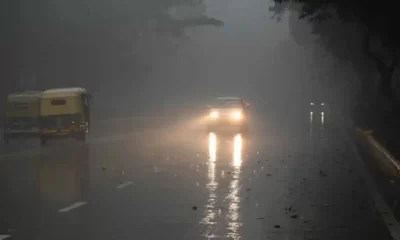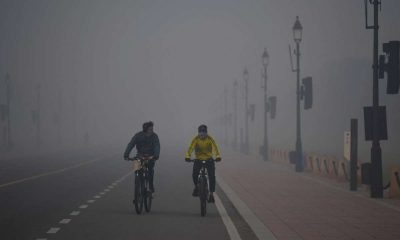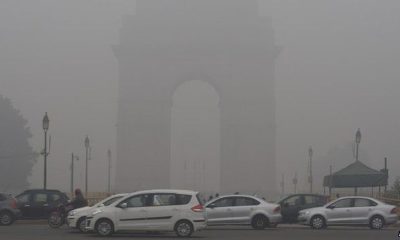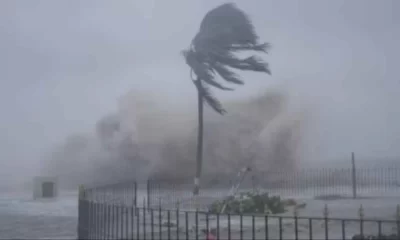India News
India to get average monsoon this year, zero chance of drought: Skymet
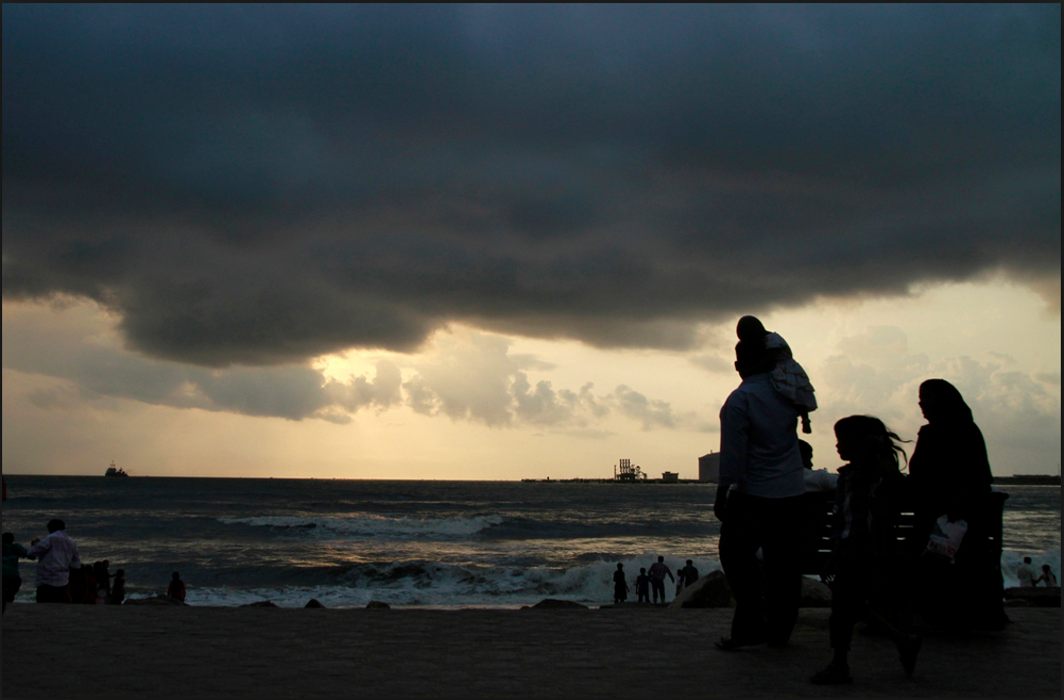
Monsoon rains are expected to be average in 2018 with ‘zero chance’ of a drought, the country’s only private weather forecasting agency Skymet Weather has said.
Monsoon rains are expected to be 100 per cent of the long-term average, Skymet tweeted. Average, or normal, rainfall is defined as between 96 per cent and 104 per cent of the long period average (LPA) – a 50-year average which is around 887 millimetres for the entire four-month season beginning June.
The government’s India Meteorological Department will come out with its preliminary monsoon forecast in mid-April but has indicated that the chances of an El Nino disrupting monsoon are slim. The El Nino, an abnormal warming of the ocean surface in central and eastern equatorial Pacific, is usually associated with weak monsoons.
“2018 is likely to remain normal at 100 per cent [with an error margin of +/-5 per cent] of the long period average [LPA] of 887 mm for the four-month period from June to September,” said Skymet.
“India is most likely to witness normal annual Monsoon rains at 100 per cent of the Long Period Average (LPA),” Skymet Weather said in a statement. “The onset month of June and the withdrawal month of September give a promising picture in terms of good countrywide rainfall distribution. Meanwhile, July and August may see comparatively lesser rainfall. To be precise, August would be a shade poorer than July,” it added.
So, while the rains would be ‘normal’ overall, farmers may have some reason for worry: June is likely to receive excess rainfall, but there is, on average, a 30 per cent chance that the key months of July and August would see ‘below normal’ – more than 10% deficit in their normal quotas – rains. July and August cover the crucial sowing and post-sowing season. These months bring in half the monsoon rains and are crucial for a good harvest.
In terms of geographical risk, Skymet expected that Peninsular India along with major portion of northeast India was likely to be at “higher risk of being rain deficient throughout the season”.
About the pre-monsoon heat across the country, Skymet said it “is a positive indicator and points towards normal monsoon”.
“Similar conditions are presently prevailing across the country. In fact, weathermen are of the view that pre-monsoon season would be slightly below normal, paving the way for intense heat before the onset of monsoon.”
Last year, India got 95 per cent of its normal monsoon quota. June and July got more than their usual quota while August and September saw significant deficits.
Skymet also said that there is nil possibility of a big nationwide drought or deficient rainfall when the total cumulative seasonal rainfall across the country falls below 90 per cent of LPA. There is 80 per cent chance of the southwest monsoon to be normal (between 96-104 per cent of the LPA) this year.
Besides ‘normal’, Skymet drew up three more scenarios likely for the season, ranging from below normal to excess rainfall with an error margin of plus-minus 5 per cent.
There are 20 per cent chances of above normal which is between 105 to 110 per cent of LPA.
Chances of normal, which is seasonal rainfall between 96 to 104 per cent of LPA, are 55 per cent.
Below normal rainfall, which is between 90 to 95 per cent of LPA, are 20 per cent.
There is “0 per cent chance of drought or seasonal rainfall that is less than 90 per cent of LPA”, the forecaster said.
Giving month-wise details, Skymet said that monsoon rains in June would be 111% of the Long Period Average (LPA) with 90 per cent chance of it being normal. June gets around 164 millimetres of rainfall.
July rains are expected to be 97 per cent of the LPA with 70 per cent chance of it being normal. The country receives around 289 millimetres of rainfall in July, which is also the highest in the four-month monsoon season that starts from June. The month is also crucial for sowing of most kharif crops.
In August, Skymet said that country is expected to receive rains equivalent to 96 per cent of LPA with 65 per cent chance of them being normal. The country receives 262 millimeters of rainfall in August.
In September, the country is expected to receive rains around 101% of LPA with 80 per cent chance of them being normal. India gets around 173 millimeters of rainfall in the last month of the monsoon season.
Almost 70 per cent of India’s annual precipitation comes in the months of June to September. The southwest monsoon is critical not only for agriculture growth as less than half of the cultivable land is under irrigation, but also boosts the general economy and helps in rejuvenating reservoirs and groundwater sources.
The 2017 southwest monsoon season India received ‘below normal’ rainfall at 95 per cent of the LPA as against the IMD’s forecast of rains to be normal at 98 per cent of the LPA with a model error of plus and minus 4 per cent. Skymet had predicted a ‘below normal’ monsoon in 2017.
The monsoon started well in June and July but there was an extended break from August till early September which pulled down the total cumulative seasonal rainfall. Around 216 districts in the country received deficient rainfall in 2017 southwest monsoon season. Three state governments of Chhattisgarh, Madhya Pradesh and Rajasthan covering 270 tehsils in 52 districts officially declared drought.
2024 Lok Sabha Elections
Lok Sabha elections 2024: Google Doodle marks the start of polls with index finger voting symbol
Google released a doodle today, to mark the begining of Lok Sabha Elections 2024 in India.
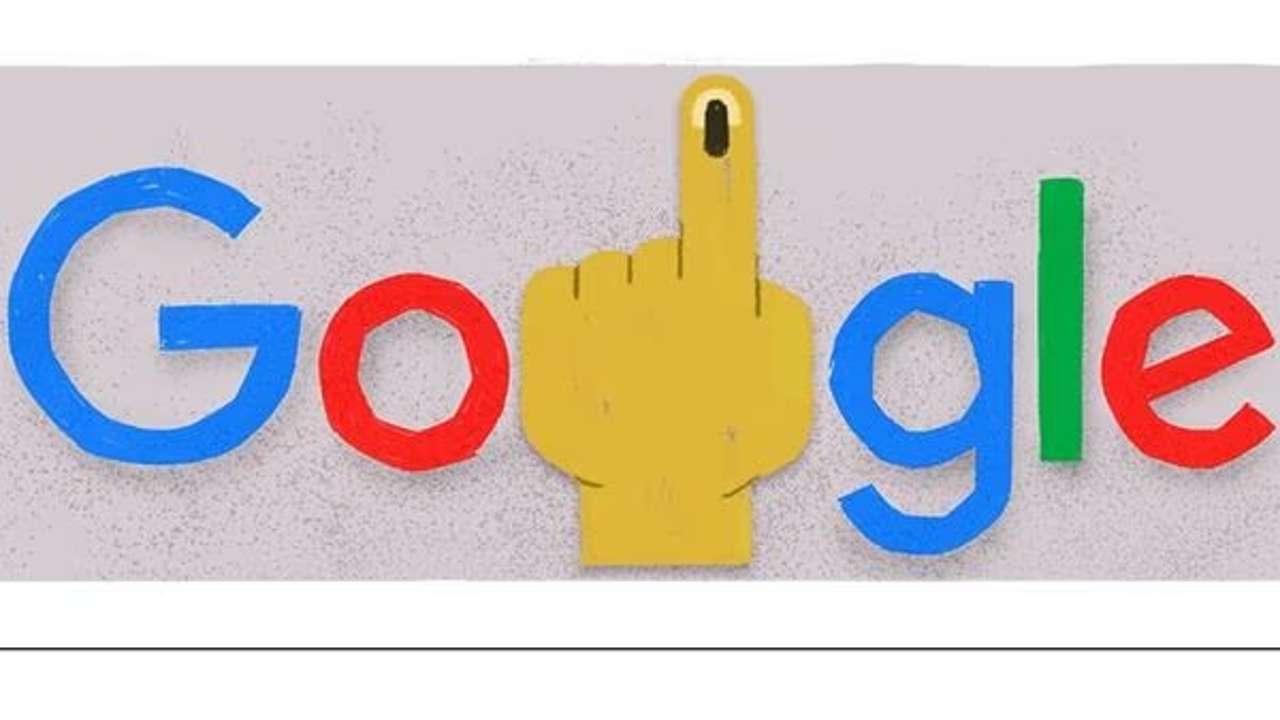
Google unveiled a doodle today, with an inked index finger to commemorate the start of the voting for Indian Lok Sabha elections 2024. This symbolic image represents the country’s ongoing voting process as the general election’s first phase gets under way.
The nationwide availability of this doodle will encourage voters in different states to visit polling booths to cast their votes.
Google Doodles are quick, temporary updates to the Google logo that reflect various national and international topics, such as holidays, significant occasions, and influential people who have had a significant impact on society.
Users can engage in a range of engaging experiences with these Doodles because they are presented in a variety of formats, including photos, animations, slideshows, videos, and interactive games.
Meanwhile, the BJP-led NDA and the INDIA alliance are expected to engage in a fierce contest in this year. 102 constituencies are being covered by elections being held in 17 states and 4 Union Territories (UTs) during 1st phase of election. Over 16.63 crore eligible voters will have 1.87 lakh polling places set up for the first phase of voting. There are 8.4 crore men, 8.23 crore women, and 11,371 voters of a third gender among the eligible voters.
A total of 1625 candidates from various parties will contest in the first phase of elections. Nitin Gadkari, K Annamalai, Jitin Prasada, Jitan Ram Manjhi, Nakul Nath, Gaurav Gogoi, Imran Masood, Karti Chidambaram, Tamilisai Soundararajan, and Dayanidhi Maran are among the important candidates whose fates would be decided today.
The Election Commission of India (ECI) has announced that polling will take place from 7:00 am to 6:00 pm. The results of the voting will pe announced on June 4, as per ECI.
Today, April 19, a number of states, including the Andaman and Nicobar Islands, Sikkim, Tamil Nadu, Puducherry, Uttarakhand, Meghalaya, Mizoram, Nagaland, and portions of Maharashtra, Madhya Pradesh, Uttar Pradesh, Jammu and Kashmir, Tripura, Rajasthan, Chhattisgarh, Manipur, Assam, and Bihar, will hold their first phase of elections.
Voting in Phase 2 is slated to take place on April 26. Phase 3 will take place on May 7, Phase 4 on May 13, Phase 5 on May 20, Phase 6 on May 25, and Phase 7 on June 1.
2024 Lok Sabha Elections
Prime Minister Narendra Modi urges citizens to vote in record numbers as voting for first phase of Lok Sabha elections begins on 102 seats across India
Union Home Minister Amit Shah also urged citizens to vote in large numbers and added that it is not only meant to determine the fate of a Lok Sabha or a candidate but also for shaping a bright future for the country.
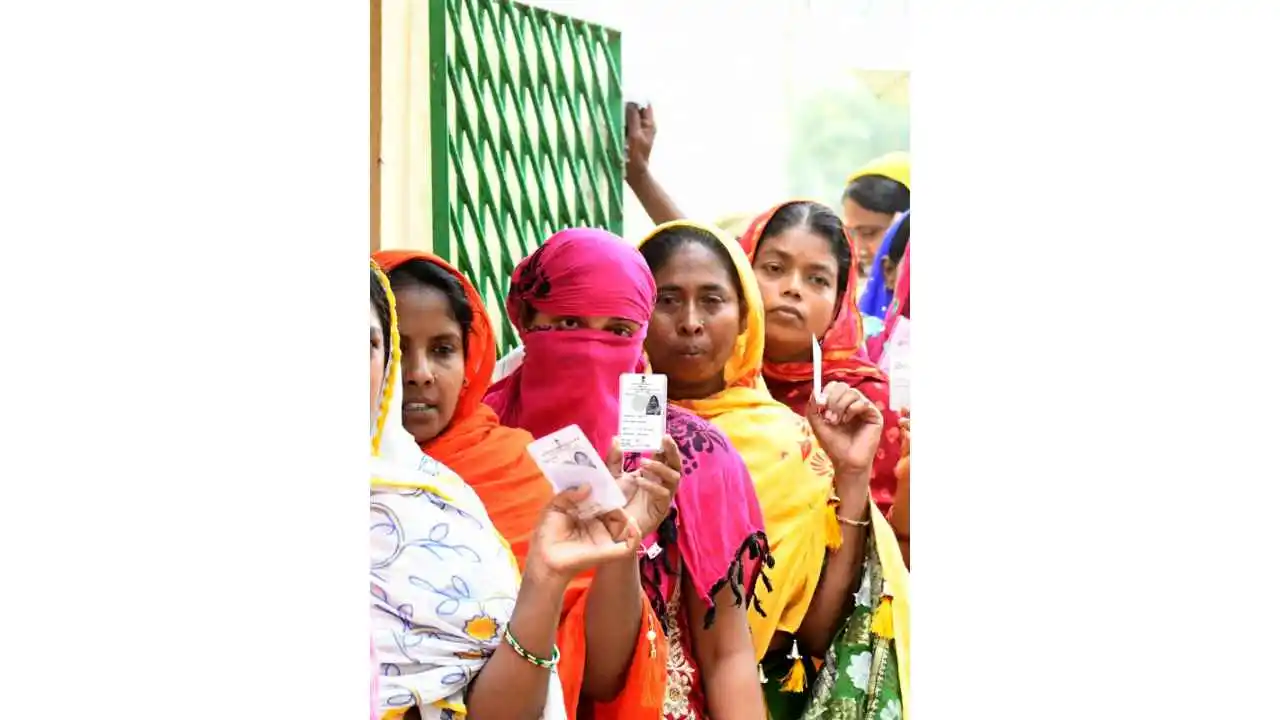
Voting for the first phase of Lok Sabha elections is taking place on 102 seats spread all over India. Prime Minister Narendra Modi took to X and urged citizens to vote in record numbers. He said he particularly called upon the young and first time voters to vote in large numbers. He added that every vote counts and every voice matters.
Congress leader P Chidambaram and RSS supremo Mohan Bhagwat cast their votes in Chennai and Nagpur, respectively. Chidambaram was confident that INDIA bloc will sweep all 39 seats in Tamil Nadu. Union Home Minister Amit Shah also urged citizens to vote in large numbers and added that it is not only meant to determine the fate of a Lok Sabha or a candidate but also for shaping a bright future for the country.
He appealed to all the voters who are voting in this phase to vote in large numbers because every vote of theirs has the power to create a secure, developed, and self-reliant India. He appealed to the people to choose a strong and decisive leadership that has shown the determination to free the country from corruption, nepotism, and appeasement while fulfilling its promises.
In the first phase, elections are being held on all seats in Uttarakhand (5), Tamil Nadu (39), Meghalaya (2), Arunachal Pradesh (2), Mizoram (1), Puducherry (1), Nagaland (1), Andaman and Nicobar Islands (1) and Lakshadweep (1), Sikkim (1). Besides, there is voting in 8 seats in Uttar Pradesh, and Maharashtra, 6 seats in Madhya Pradesh, 12 seats in Rajasthan, 4 in Bihar, 2 in Manipur, 3 in West Bengal, and 1 seat each in Jammu and Kashmir, Tripura, and Chhattisgarh. Assembly elections are also taking place on 60 seats in Arunachal Pradesh and 32 seats in Sikkim.
India News
Enforcement Directorate says Arvind Kejriwal is deliberately eating mangoes, sweets, taking sugar with tea to increase his blood sugar level and create ground for bail
The Enforcement Directorate (ED) made the claim before special judge for ED and CBI cases, Kaveri Baweja, who gave directions to the Tihar jail authorities to file a report in the matter which should also include Kejriwal’s diet chart.

The Enforcement Directorate told the court on Thursday that Delhi Chief Minister Arvind Kejriwal, arrested in liquor policy case, is taking high sugar intake like mangoes and sweets every day deliberately in spite of suffering from type 2 diabetes so that he can create grounds for medical bail. The Enforcement Directorate (ED) made the claim before special judge for ED and CBI cases, Kaveri Baweja, who gave directions to the Tihar jail authorities to file a report in the matter which should also include Kejriwal’s diet chart.
Kejriwal had moved court and also sought permission to consult his regular doctor via video conference because his sugar levels were fluctuating. The judge directed the authorities concerned to file the report by tomorrow, when the court will take up the matter again.
Advocate Vivek Jain, counsel for Delhi CM Arvind Kejriwal responded to the ED’s argument and said this is an issue made by Enforcement Directorate so that home-cooked food should also be stopped. He said this would have a major impact on his health. Advocate Jain added that whatever Kejriwal is eating is as per his doctors prescribed dietary chart. He said the matter is sub judice and they do not have anything to say.
Advocate Vivek Jain objected to the Enforcement Directorate’s submission and said that the agency is making these allegations only for the media. He said that some toffee and other things are given to diabetic patients so that they can maintain their sugar levels. Jain added that Kejriwal is withdrawing his application and will file a better one later.
AAP minister Atishi Marlena said that Arvind Kejriwal had fallen ill and lost about 4.5 kg since his arrest on March 21. She addressed a press conference where the AAP leader said, Arvind Kejriwal is a severe diabetes patient but he never lets his health issue come as the way of his in the service to the nation.
-

 Entertainment20 hours ago
Entertainment20 hours agoBollywood stars Vidya Balan, Kartik Aaryan, Pratik Gandhi, Ileana D’Cruz, Mouni Roy, Radhika Madan, Mrunal Thakur attend Do Aur Do Pyaar premiere
-

 Cricket news18 hours ago
Cricket news18 hours agoHappy Birthday KL Rahul: Suniel Shetty wishes son-in-law KL Rahul on his 32nd birthday
-
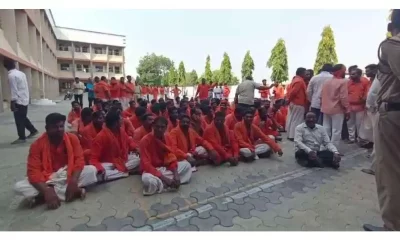
 India News22 hours ago
India News22 hours agoReligious outfit vandalises The Blessed Mother Teresa High School in Telangana after teachers object to students wearing Hanuman Deeksha dress
-
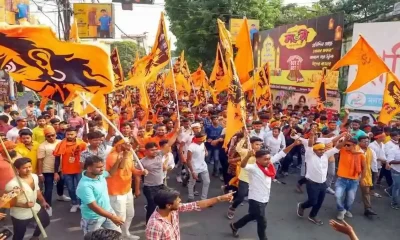
 India News23 hours ago
India News23 hours agoClashes erupt during Ram Navami procession in West Bengal’s Murshidabad district
-
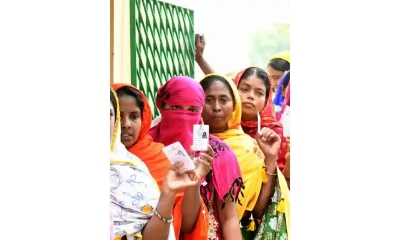
 2024 Lok Sabha Elections1 hour ago
2024 Lok Sabha Elections1 hour agoPrime Minister Narendra Modi urges citizens to vote in record numbers as voting for first phase of Lok Sabha elections begins on 102 seats across India
-

 India News17 hours ago
India News17 hours agoEnforcement Directorate seizes Shilpa Shetty’s husband Raj Kundra’s properties worth Rs 97 crore
-
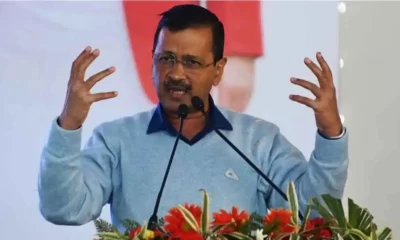
 India News16 hours ago
India News16 hours agoEnforcement Directorate says Arvind Kejriwal is deliberately eating mangoes, sweets, taking sugar with tea to increase his blood sugar level and create ground for bail
-
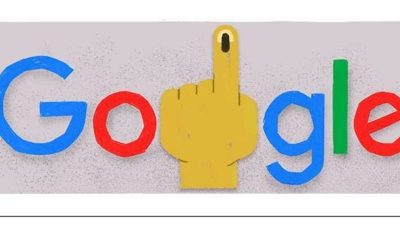
 2024 Lok Sabha Elections24 mins ago
2024 Lok Sabha Elections24 mins agoLok Sabha elections 2024: Google Doodle marks the start of polls with index finger voting symbol

